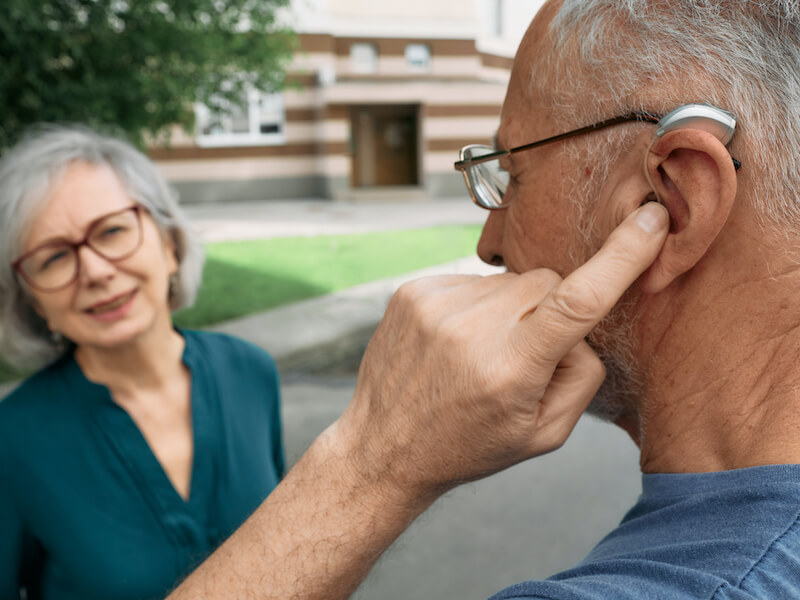
Have you ever had your internet disappear right as you’re getting to the best part of your favorite Netflix show? Instead of discovering who won the baking show, you have to watch a never-ending spinning circle. All you can do is wait around for it to come back. Is it your internet provider, modem, router, or perhaps it will simply come back on its own? It sort of stinks.
Technology can be tremendously aggravating when it doesn’t work properly. The same is certainly true of your hearing aids. Most of the time, your hearing aids will provide you with the means to stay connected to loved ones, have discussions with co-workers, and keep up with your neighbors.
But when they quit working, your hearing loss symptoms can suddenly become much more frustrating. The technology you’re depending on has let you down. Why would your hearing aids just stop functioning? So how do you cope with that? Well, there are three prevalent ways that hearing aids can fail, here’s how you can start to recognize and troubleshoot those problems.
Three common issues with hearing aids (and some possible solutions)
Even though hearing aids are sophisticated technology, individuals might encounter three common problems with them. Here’s what could be causing those issues (and what you can do to fix them).
Whistling and feedback
Maybe you suddenly begin to hear a terrible high-pitched whistling while you’re trying to have a chat with a friend or relative. Or perhaps you detect a bit of feedback. You start to think, “this is weird, what’s up with this whistling”?
Whistling and feedback can be caused by these possible issues:
- You may not have your hearing aids correctly positioned in your ears. Try to take them out and re-seat them. If the fit isn’t right you might need to come see us so we can help you get a better fit.
- The tubing that attaches the hearing aid with the earmold, on behind-the-ear models, can sometimes become compromised. Try to examine this tubing as well as you can and make sure nothing is loose and the tube does not appear damaged.
- The functionality of your hearing aid can be affected by earwax buildup in your ear canal. You’ll find this comes up fairly regularly. That includes making your hearing aid whistle or feedback. If possible, you can attempt to clean some earwax out of your ear or talk to us about the best method to do that (don’t use a cotton swab).
Depending on the underlying cause of the feedback, we can help you deal with these issues if you can’t figure them out on your own.
Hearing aids not producing sound
Your hearing aids are supposed to make, well, sound. That’s their primary function! Something has definitely gone wrong if you don’t hear any sound coming from your hearing aid. So what could cause hearing aids to drop all sound? Here are several things to watch for:
- Earwax buildup: Yup, earwax strikes again. Examine your device for indications of earwax on the microphone or speakers or any sensitive bits. Keep your device really clean.
- Power: Look, we’ve all forgotten to turn the hearing aids on before. Make certain that’s not the issue. This potential issue can then be eliminated..
- Batteries: If you have rechargeable batteries, make sure that they are fully charged. And even rechargeable batteries should be switched out on occasion.
- Your settings: If you have them, flip through your custom settings. Your hearing aids might think you’re in a huge room when you’re actually in a small room because the setting isn’t right. This incorrect setting could throw off the sound you’re hearing.
If these steps don’t correct your problems, we may have the solution. We’ll be able to help you identify the next steps, and whether maintenance, repair, or replacement is required.
Your ears hurt when you’re wearing your hearing aids
Maybe your hearing aids are fine functionally but they hurt when you put them in. And you’re probably wondering why your hearing aids would make your ears hurt. You’re not as likely to use your hearing aids on a daily basis if they make your ears hurt. So, why do they ache?
- Fit: The fit of the device is the most evident issue. After all, the majority of hearing aids work best when they fit tightly. Which means that there can occasionally be discomfort involved in a poor fit. Some models of hearing aid can be fit to the particular shape of your ears. The better the fit, the fewer issues you’ll have with pain over the long run. We will be able to help you achieve the best possible fit from your devices.
- Time: Usually, it just takes some time to get used to your hearing aids. Each person will have a different adjustment period. It’s worth talking about when you purchase your hearing aids so you have a reasonable concept of how long it may take you to become comfortable with your devices. If uncomfortable ears continue, talk to us about that too!
Take your new hearing aid out for a test ride
One of the best ways to prevent possible problems with hearing aids is to take them out for a bit of a test drive before you commit. Most of the time we will have loaner pairs for you to try out before you make a decision.
In fact, we can help you ascertain the best type of hearing aid for your requirements, adjust the fit to match your ears, and help you handle any extended issues you may have with your devices. In other words, when your devices quit working, you’ll have a resource that can help!
And that’s a lot more than you will get with an over-the-counter hearing aid!